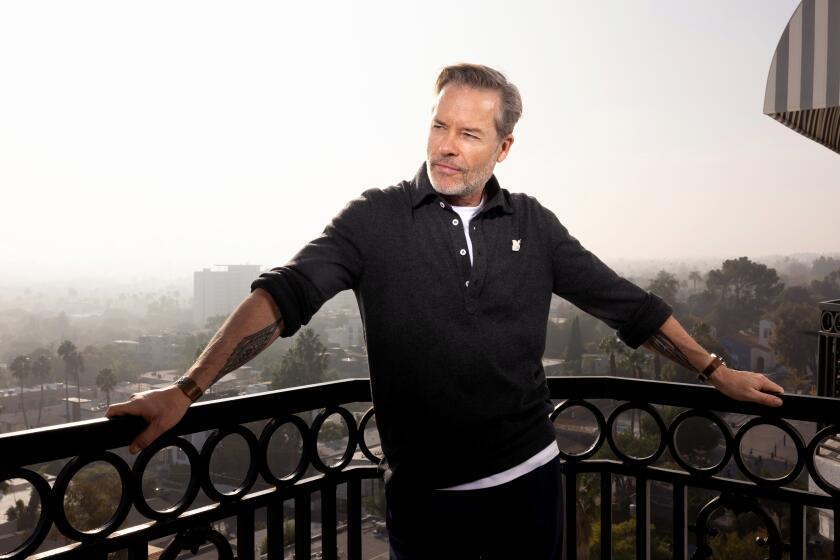Bullock, Streep, Dench: Golden time for actresses of a certain age
- Share via
June Squibb, 84; Judi Dench, 79; Meryl Streep, 64; Oprah Winfrey, 59; Emma Thompson, 54; Sandra Bullock, 49; Julia Roberts, 46; Cate Blanchett, 44; Lupita Nyong’o, 30; Jennifer Lawrence, 23.
These 10 actresses received either a leading or supporting nomination from the Screen Actors Guild last week for their fine work in 2013. Eight of them got a similar nod from the Golden Globes. Most will likely surface again when the Oscar nominations are announced in January.
The numbers are there for a reason. To put it bluntly: This year, age matters. Eighty percent of the actresses deemed by their peers to be the best of the rest are older than 40. Average the numbers and you get a mean age (I use the term in both the mathematical and the cultural sense) of 53.
It is a significant turn of events with implications for the future. And an indictment of the past.
PHOTOS: SAG Awards nominations snubs and surprises
Since the dawn of time, or at least since the beginning of movies in the late 1800s, Hollywood actresses, like competitive athletes and Greek yogurt, have come with an expiration date.
Adored in their 20s, applauded in their 30s, discarded in their 40s. Even the acclaimed got the message: Your services are no longer required. If anything, longevity was the ultimate lose-lose situation. In a culture obsessed with youth and beauty, as ours has been for far too long, there was little interest in how experience and age might have seasoned and smartened actresses. And it wasn’t just Hollywood’s problem — ask Hillary Rodham Clinton.
Not so the men. Actors have long been allowed, even encouraged, to flaunt their wrinkles, their thinning hair, their expanding paunches. Elder statesmen.
Their female counterparts, desperate to stay in the game, i.e. appear younger, went under the knife or they went away.
PHOTOS: SAG Awards 2014 top nominees
Even for the ones who found work, it was rarely award-caliber roles. More often it was the aunt — crazy or kind — the older wife who is betrayed, the mom. Not the crème but the clabber. It’s why the movies lost, for a while, wonderfully talented women to TV. Glenn Close, 66, and six Oscar nominations thus far, racked up five years doing “Damages,” but she’s back with five films due out next year. Sally Field, 67, spent five years as the ruling matriarch of ABC’s “Brothers & Sisters,” and when she came back to film as Mary Todd Lincoln in last year’s “Lincoln,” the performance earned her an Oscar nomination. Jessica Lange, 64, a two-time Oscar winner, remains in TV land thanks to a remarkable ongoing run in FX’s “American Horror Story.”
Of course, there have always been exceptions. Diane Keaton picked up an Oscar nomination for 2003’s “Something’s Gotta Give.” She was 57. Her single Oscar win came many years earlier for “Annie Hall.” At 31, by Hollywood standards, she was in her prime.
Streep is the one who defies all the odds. Since her film career began in earnest with “The Deer Hunter” in 1978, she’s won three Oscars, the last one in 2012 at age 63 for “The Iron Lady.” But more significantly, 10 of her 17 Oscar nominations have come since she turned 40. More than half.
Streep, it would seem, is our leading edge. Our cutting edge.
But why should it matter to the rest of us? I thought you’d never ask.
INTERACTIVE: Best and worst Oscar moments since 2008
We, the audience, reap the benefit of the experience they bring to roles, a nuance of emotion, a physical texture. No matter how talented these actresses were 10, 20, 30 or more years ago, the years have refined their craft. Acting is, at its core, a craft — something to be worked at, honed, perfected. Time helps that process.
Then there are the stories and the characters that we would not otherwise see. Interesting ones about lives with some history and heft. Fractious characters who demand that attention be paid. For all that movies do to entertain, they also inform, shape our perception of the world and our place in it, express our anxieties. In the cultural marketplace, we may still bow to youth and beauty, but age and aging well are significant obsessions — too significant to be overlooked by filmmakers. This year they’ve not only looked but they’ve also dug in deeply.
Consider the 2013 lineup: Streep and Roberts as acid-tongued mother and daughter in a caustic battle for who is the more callous in “August: Osage County”; Squibb as the nagging, know-it-all wife in “Nebraska”; Dench as a mother searching for her out-of-wedlock firstborn decades later in “Philomena”; Thompson as the prickly, uncompromising “Mary Poppins” author, unflinching in going toe-to-toe with Walt Disney in “Saving Mr. Banks”; Winfrey as the sassy wife and social arbitrator of an African American family riding out the race wars in “Lee Daniels’ The Butler”; Bullock as a space engineer suddenly forced to fight to survive in “Gravity”; Blanchett as a deconstructing Wall Street trophy wife in “Blue Jasmine.”
Everything about the roles — and the actresses who played them to perfection — required that the stories start after the passage of a significant amount of time: when the children are grown, when bodies are failing, when the accumulated humiliations are too great to bear — all giving the stories depth. From the box office to the award circuit, the successes help teach filmmakers and bean counters that audiences will embrace them, buy tickets to see them.
This is not to slight the younger set. Nyong’o and Lawrence earned their nominations with work that was indelible, and they may be unbeatable. As good as they are now, I am still curious to see what they will become — in time.
But for a change, 2013 has been a golden year for actresses of a certain age. I hope 2014 will be even better.
More to Read
Only good movies
Get the Indie Focus newsletter, Mark Olsen's weekly guide to the world of cinema.
You may occasionally receive promotional content from the Los Angeles Times.











